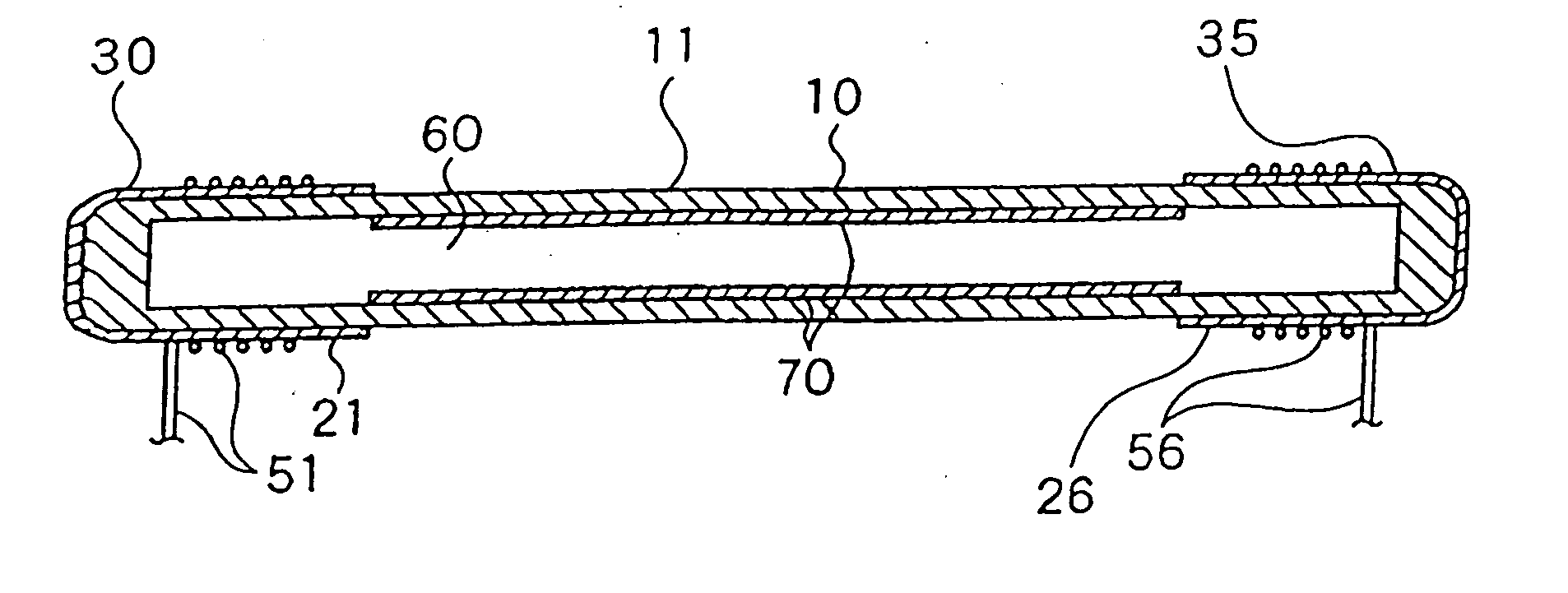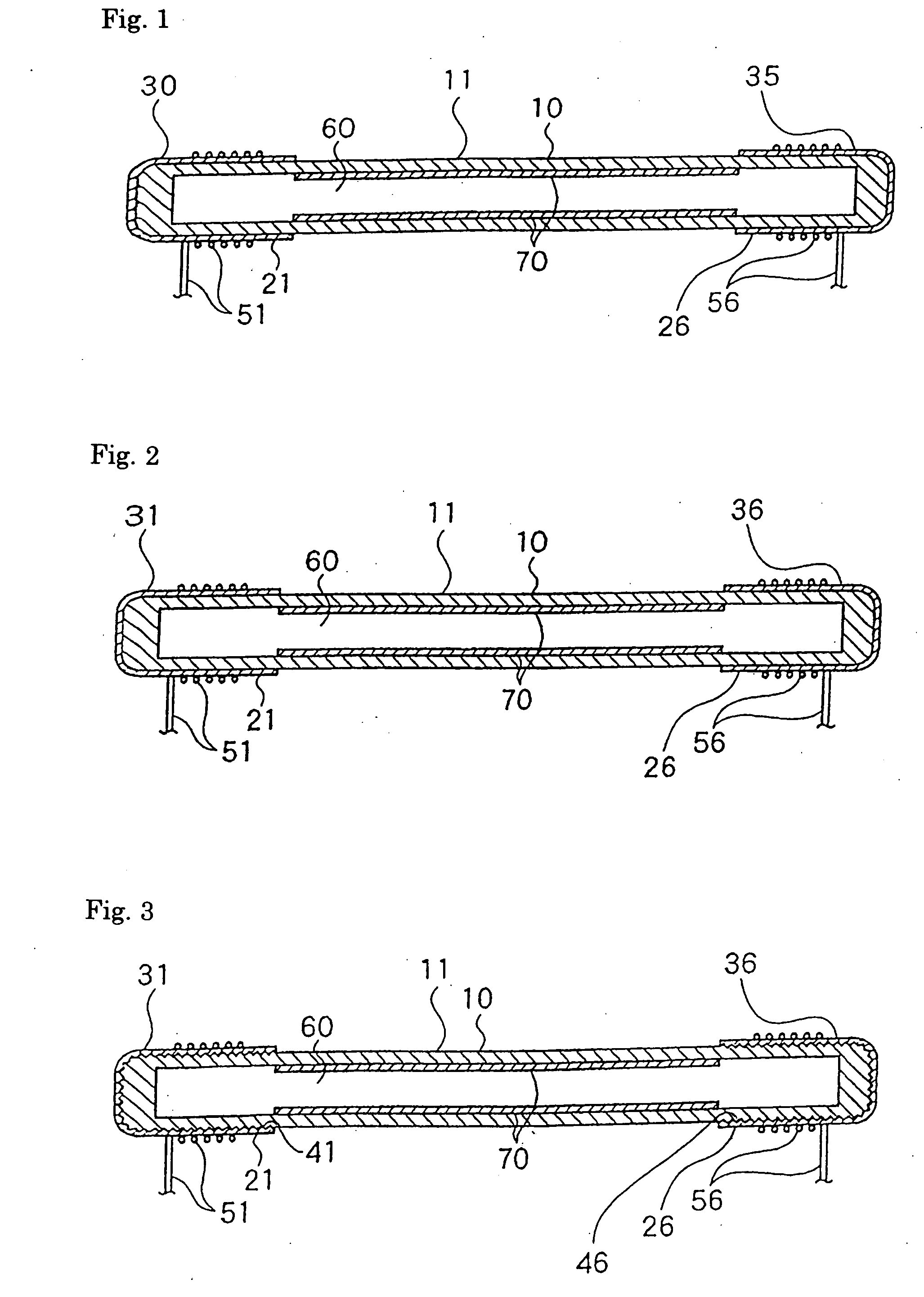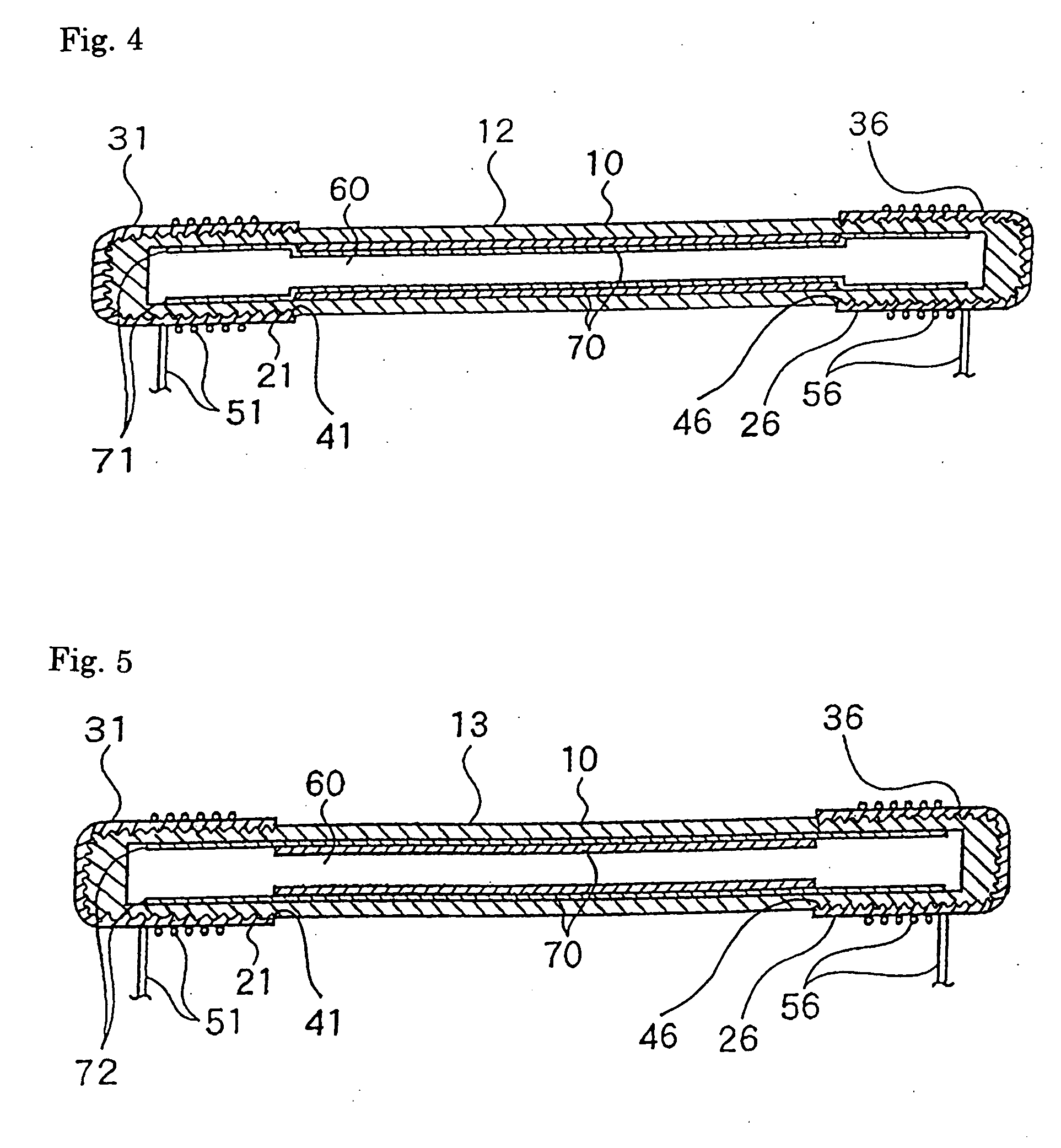Low- Voltage discharge lamp and its manufacturing method
a discharge lamp and low-voltage technology, applied in the manufacture of electric discharge tubes/lamps, cold cathode manufacture, electrode systems, etc., can solve the problems of increasing the power consumption of the lamp, difficulty in mass production of discharge lamps, and partially carbonization, and achieves high efficiency and cost reduction
- Summary
- Abstract
- Description
- Claims
- Application Information
AI Technical Summary
Benefits of technology
Problems solved by technology
Method used
Image
Examples
first embodiment
[0019] The embodiments according to the present invention will be now explained with reference to the accompanying drawings. FIG. 1 shows the structure of a dielectric barrier discharge type low-pressure discharge lamp 11 according to the present invention. In the low-pressure discharge lamp 11, a tubular glass lamp vessel 10 is formed with borosilicate glass, having an outer diameter of 2.6 mm, an inner diameter of 2.0 mm, and a total length of 350 mm. The tubular glass lamp vessel 10 is charged with mixed gases of neon and argon at a charge pressure of 60 Torr (composition ratio of neon / argon is 90 mol % / 10 mol %). Further, the tubular glass lamp vessel is also charged with 3 mg of mercury.
[0020] On outer surfaces of both ends of the tubular glass lamp vessel 10, solder dipping layers 30 and 35 are formed respectively as conductor layers of external electrodes 21 and 26. On an inner peripheral wall of the tubular glass lamp vessel 10 excluding the parts where the external electrod...
second embodiment
[0036] In the low-pressure discharge lamp 12 having such a construction, the ultrasonic solder dipping method is adopted, thus mass production of a highly efficient low-pressure discharge lamp can be realized at a low price as in the low-pressure discharge lamp 11 according to the Furthermore, according to the embodiment, silver consumption due to adsorption of mercury into the phosphor layer 70 in the glass lamp vessel 10 can be suppressed and silver consumption due to entry of silver into the glass can be prevented. Thus a life span of the lamp can be lengthened.
third embodiment
[0037] Next, in a low-pressure discharge lamp 13 shown in FIG. 5, the blasted surfaces 41 and 46 are formed on the outer surfaces of both ends of the tubular glass lamp vessel 10, and the ultrasonic solder dipping layers 31 and 36 are formed as external electrodes 21 and 26 on the surfaces thereof, as in the Further, a metal oxide layer 72 such as aluminum oxide, yttrium oxide, or zinc oxide is formed between the inner surface of the tubular glass lamp vessel 10 and the phosphor layer 70 and on the glass surfaces inside the external electrodes 21 and 26.
[0038] In the low-pressure discharge lamp 13 having such a construction, the ultrasonic solder dipping method is adopted, thus mass production of a highly efficient low-pressure discharge lamp can be realized at a low price similarly to the low-pressure discharge lamp 11 of the second embodiment. Furthermore, according to the embodiment, silver consumption due to entry of silver into the glass surface of the tubular glass lamp vesse...
PUM
 Login to View More
Login to View More Abstract
Description
Claims
Application Information
 Login to View More
Login to View More - R&D
- Intellectual Property
- Life Sciences
- Materials
- Tech Scout
- Unparalleled Data Quality
- Higher Quality Content
- 60% Fewer Hallucinations
Browse by: Latest US Patents, China's latest patents, Technical Efficacy Thesaurus, Application Domain, Technology Topic, Popular Technical Reports.
© 2025 PatSnap. All rights reserved.Legal|Privacy policy|Modern Slavery Act Transparency Statement|Sitemap|About US| Contact US: help@patsnap.com



